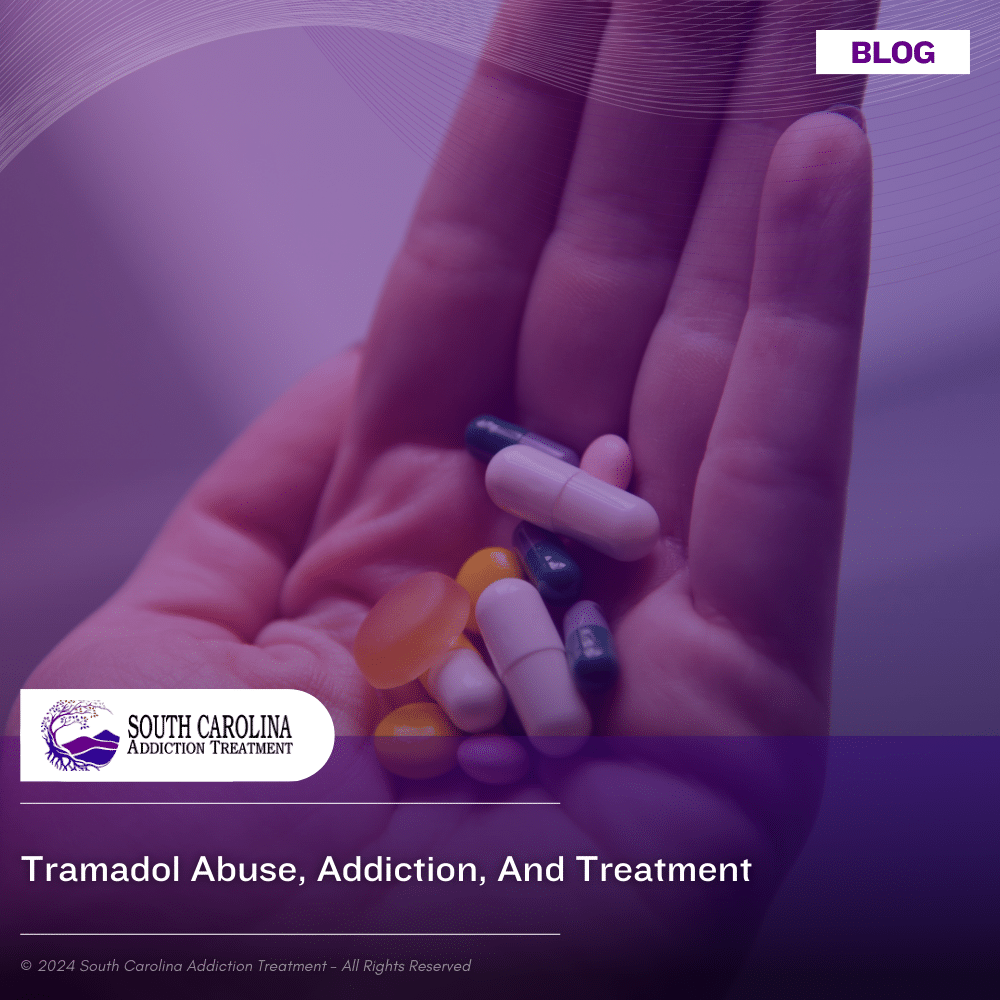Tramadol Abuse, Addiction, and Treatment

Medically Verified: 2/1/24
Medical Reviewer
Chief Editor

All of the information on this page has been reviewed and verified by a certified addiction professional.
Opioid addiction is a serious problem in the United States. According to the National Institute of Drug Abuse (NIDA), opioids were responsible for 80,411 overdose deaths in 2021.[1] Examples of commonly misused opioids include hydrocodone, oxycodone, morphine, fentanyl, and heroin.
While heroin and oxycodone are some of the most discussed opioids of abuse, there are other opioid medications you should be aware of. One of the lesser-known opioids that pose a significant risk of addiction is tramadol. Tramadol is commonly prescribed to treat moderate pain after someone undergoes surgery, however, long-term use of the substance can lead to addiction.
If you or a loved one are struggling with tramadol abuse and addiction, please contact our team at South Carolina Addiction Treatment to discuss your treatment options.
What is Tramadol?
Tramadol is a prescription opioid pain reliever that is prescribed to adults and children over 12 years of age for moderate pain. It works to relieve pain by changing the way your brain and nervous system respond to signals of pain sent by your body. Brand names for tramadol include Ultram and ConZip. While tramadol is effective in reducing the symptoms of pain, it can be habit-forming and addictive.
Because long-term tramadol use can result in addiction, your doctor will only prescribe it for short-term use. Tramadol may cause side effects, including:[2]
- Sleepiness
- Headaches
- Nervousness
- Shakiness
- Changes in mood
- Heartburn or indigestion
- Dry mouth
While less common, tramadol can also lead to life-threatening or severe side effects among individuals who are allergic or intolerant of the medication. These effects may also occur if you take too much of the substance and experience an overdose.
The rare and severe side effects of tramadol include:[2]
- Hives, rashes, or blisters
- Hoarseness
- Difficulty breathing or swallowing
- Chest pain
- Swelling of the eyes, lips, face, throat, tongue, hands, feet, ankles, or lower legs
- Agitation, hallucinations, fever, sweating, or confusion
- Fast heartbeat
- Shivering, loss of coordination, muscle stiffness, or twitching
- Changes in heartbeat
- Nausea and vomiting
- Loss of appetite
- Fatigue and drowsiness
- Loss of consciousness
- Seizures
If you experience the severe side effects of tramadol, contact your doctor or emergency medical services immediately.
Why Do People Abuse Tramadol?
While tramadol can relieve symptoms of pain, people might begin abusing this substance because it can produce feelings of euphoria and drowsiness. The euphoric effects that tramadol can cause are similar to that of other opioids like hydrocodone, oxycodone, or heroin. This feeling can be highly addictive, causing people to develop an addiction to the substance.
Once someone experiences the euphoric effects of tramadol, they may begin to abuse larger doses or mix it with alcohol or other drugs to create a more potent high. This can lead to a vicious cycle of addiction that is difficult to overcome without professional help.
Additionally, taking large doses of tramadol or combining it with other central nervous system depressants like heroin can lead to an overdose. Tramadol overdoses can be life-threatening and require emergency medical treatment.
Signs of Tramadol Addiction
If you or a loved one use tramadol in a manner other than intended by a doctor, you could be suffering from an addiction to the drug. Sometimes, identifying tramadol addiction can be difficult, especially if you are prescribed the drug. As a result, it is important to be aware of the signs and symptoms of tramadol addiction.
Signs of tramadol addiction include:
- Taking larger doses of the substance than intended
- Taking the substance more frequently than prescribed
- Running out of your prescription early
- Going to multiple doctors to receive more than one prescription at a time (“doctor shopping”)
- Stealing tramadol from your friends or loved ones
- Requiring a larger dose of tramadol to experience a desired effect (developing a tolerance)
- Experiencing uncontrollable urges or cravings to abuse tramadol
- Dealing with withdrawal symptoms when you cannot abuse the substance
- Continuing to use tramadol despite facing social, mental, or health consequences
How is Tramadol Addiction Treated?
Tramadol addiction is typically treated by a continuum of care, including detox, inpatient rehab, and outpatient treatment. The first step in recovering from tramadol addiction is attending detox, where you will receive medications and treatments that limit your withdrawal symptoms, prevent cravings, and help your body eliminate the substance safely. After detox, you will enter an inpatient drug rehab program.
Inpatient drug rehab may involve::
- Evidence-based behavioral therapy
- Group counseling
- Family therapy
- Holistic treatments like yoga, meditation, and massage therapy
- Treatment for co-occurring mental health conditions
- Relapse prevention planning
- Aftercare services
After you complete your inpatient program, you will have the option to attend outpatient treatment. These programs allow you to live at home while you receive the same services you engaged in during inpatient treatment.
Find Help for Tramadol Abuse and Addiction
If you or a loved one suffer from tramadol addiction, it’s time to seek professional help. At South Carolina Addiction Treatment, we can provide you with the tools and support necessary to maintain long-term recovery.
To learn more about our prescription drug treatment program, please contact us today.
References:
- The National Institute of Drug Abuse (NIDA): Drug Overdose Death Rates, Retrieved July 2023 From https://nida.nih.gov/research-topics/trends-statistics/overdose-death-rates
- Medline Plus: Tramadol, Retrieved July 2023 From https://medlineplus.gov/druginfo/meds/a695011.html

